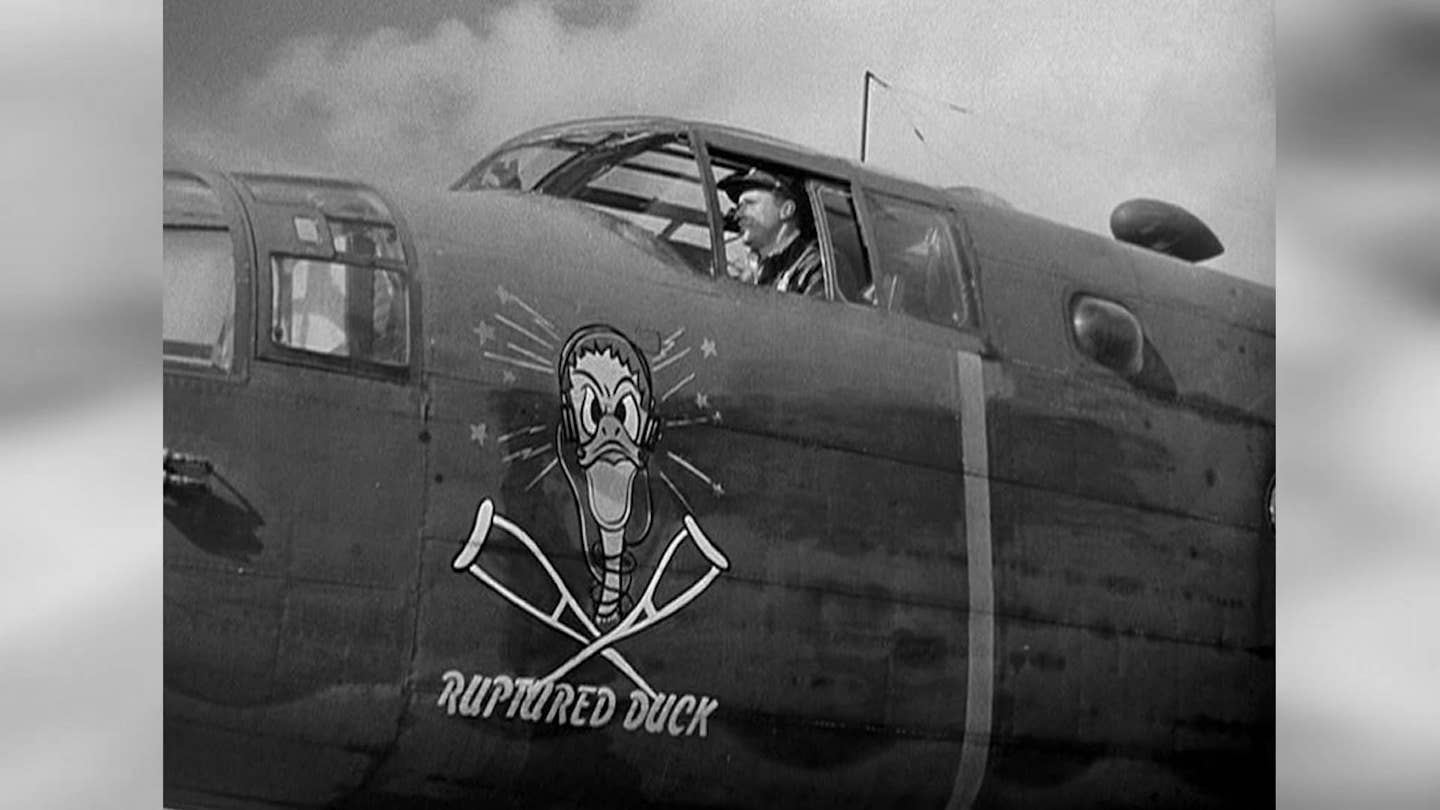
The “Ruptured Duck,” a a B-25 Mitchell bomber that was flown during the Doolittle Raid in 1942. {Courtesy: Wright-Patterson Air Force Base]
Walt Disney was too old to be drafted during World War II but that didn't stop him—and Disney Studios—from contributing to the war effort. Disney’s animation studios played a crucial role in the development of military unit patches used during World War II.
The designs were handpainted on leather, and then the patches sewn onto the flight jacket. The demand was so great that Disney created a special unit devoted to creating these designs. Approximately 1,300 units had a Disney-designed unit patch.
One of the first Disney creations was Fifinella, designed for the Women's Airforce Service Pilots (WASP). The shapely winged heroine came from preliminary character sketches for a cartoon based on the 1942 book The Gremlins by Roald Dahl, a British writer turned fighter pilot. Dahl wrote the story when he was grounded by injury. The Gremlins was a fairytale, about how evil gremlins—usually males—caused airplanes to crash. According to the WASP legend, Fifinella was so beautiful she distracted the evil male gremlins so that they forgot what they were doing and left the WASP aircraft alone.
Although the book was not made into a full-length cartoon, Fifinella is still one of the most recognizable Disney characters from WWII.
The unit designs frequently featured familiar Disney characters thumbing their nose, flying an airplane, holding a gun, or riding a bomb. Sometimes the characters looked happy about what they were doing, other times they had scowls and looks of determination on their faces.
Donald Duck was a particular favorite. His image appears famously on Ruptured Duck, one of the B-25s that took part in the Doolittle Raid on Tokyo. Additionally, he became the mascot of several Naval attachments. For example, the unit patch of Naval Air Station Jacksonville features Donald wearing a cloth flying helmet and flying half an egg shell.
Unit patches weren't the only contribution Disney made to the war effort. In October 1941, Disney released Dumbo, a feature-length cartoon with a decidedly pro-military scene. (Spoiler alert: Dumbo is a baby elephant that because of his large ears has the ability to fly.) In the cartoon, Dumbo becomes a media sensation and one of the scenes depicts a news reel where the Army commissions a squadron of Dumbo Bombers for “victory”—although when the cartoon first appeared, the U.S. was still a few months away from joining the hostilities.
When the U.S. entered the war, Disney animators switched from creating entertainment to cartoon training films—including several for aviation cadets on everything from aerodynamics to weather. These cartoon training films were done in black and white, and they were anything but funny. Disney also produced short films designed to spread propaganda and boost morale. Donald Duck was a favorite here too, as he played everything from a recruit in bootcamp to a commando to a Nazi sympathizer.
Animation wasn't the only contribution Disney made to the aviation war effort. Because of the studios proximity to the Lockheed Plant in Burbank, California, after the bombing of Pearl Harbor, Disney permitted the installation of a anti-aircraft battery on the property and allowed the Army to occupy the studios for some eight months.

Sign-up for newsletters & special offers!
Get the latest FLYING stories & special offers delivered directly to your inbox






